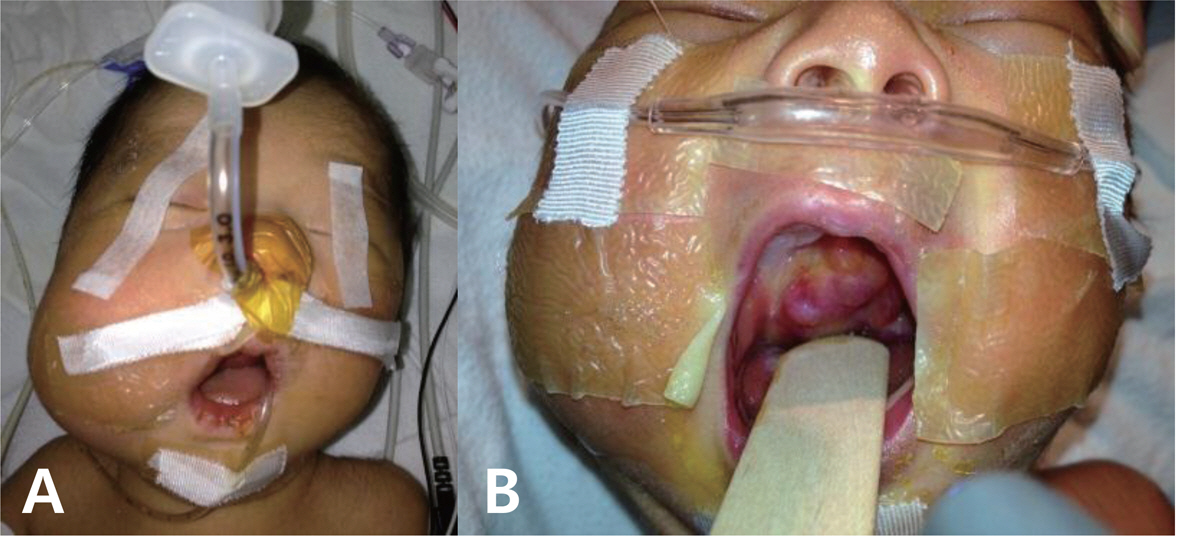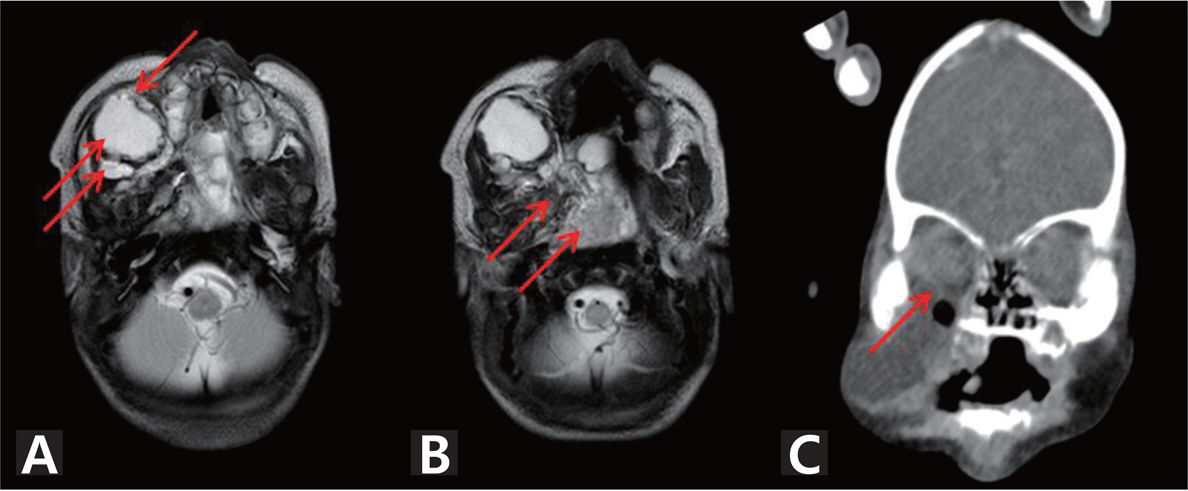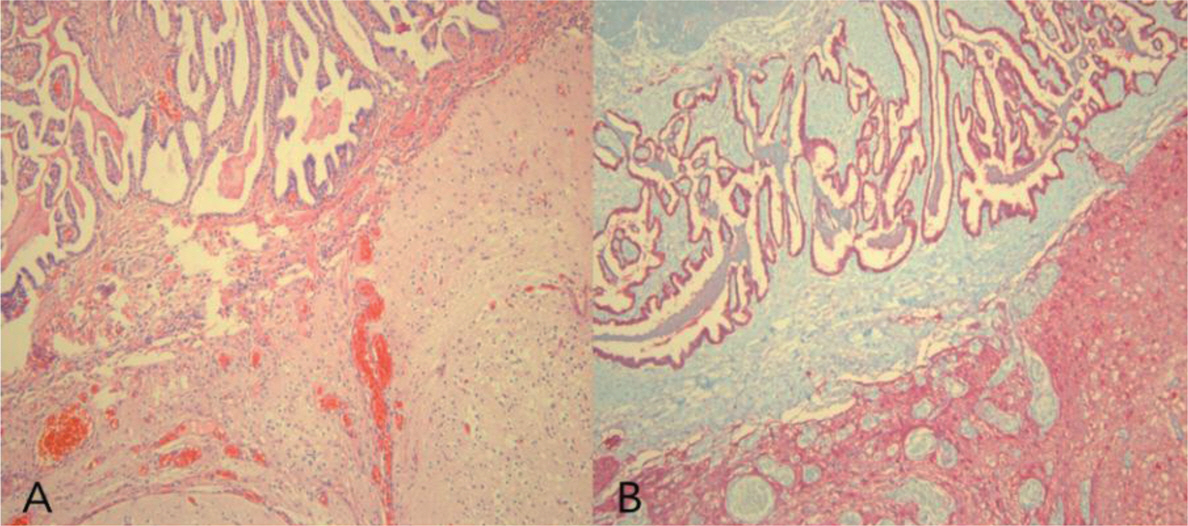Korean J Perinatol.
2014 Dec;25(4):307-310. 10.14734/kjp.2014.25.4.307.
Glial Choristoma Accompanied with Severe Bony Defect in Orbit in a Newborn
- Affiliations
-
- 1Department of Pediatrics, Chung-Ang University Hospital, Chung-Ang University College of Medicine, Seoul, Korea. piena81@hotmail.com
- 2Department of Radiology, Chung-Ang University Hospital, Chung-Ang University College of Medicine, Seoul, Korea.
- 3Department of Otorhinolaryngology, Chung-Ang University Hospital, Chung-Ang University College of Medicine, Seoul, Korea.
- KMID: 2281150
- DOI: http://doi.org/10.14734/kjp.2014.25.4.307
Abstract
- Glial choristoma is a mass-like lesion composed of otherwise normal, mature brain tissue that is isolated from the spinal cord and cranial cavity. In generally, this choristoma involves extracranial midline structures, especially the nose, as well as the nasopharynx, oropharynx and cleft. Glial choristomas rarely involve extracranial non-midline structures such as the scalp, orbit, middle ear or mastoid and account for approximately 10% of all glial choristomas. Moreover, such glial choristoma presentations are usually seen in adults, most of whom have predisposing factors such as trauma, surgery, or chronic inflammation. Here, we present a case of a glial choristoma that invaded a neonate's the nasopharynx, oropharynx, oral cavity and orbit.
Keyword
MeSH Terms
Figure
Reference
-
1.Heffner DK. Brain in the middle ear or nasal cavity: heterotopia or encephalocele? Ann Diagn Pathol. 2004. 8:252–7.
Article2.Klein MV., Schwaighofer BW., Sobel DF., Fantozzi RD., Hesselink JR. Heterotopic brain in the middle ear: CT findings. J Comput Assist Tomogr. 1989. 13:1058–60.3.Lee JI., Kim KK., Park YK., Eah KY., Kim JR. Glial choristoma in the middle ear and mastoid bone: a case report. J Korean Med Sci. 2004. 19:155–8.
Article4.Gyure KA., Thompson LD., Morrison AL. A clinicopathological study of 15 patients with neuroglial heterotopias and encephaloceles of the middle ear and mastoid region. Laryngoscope. 2000. 110:1731–5.
Article5.Dunham E., Armeni M. Glial choristoma of the temporal bone in a 7-month-old infant. JAMA Otolaryngol Head Neck Surg. 2013. 139:944–6.
Article6.McGregor DH., Cherian R., Kepes JJ., Kepes M. Case reports: heterotopic brain tissue of middle ear associated with cholesteatoma. Am J Med Sci. 1994. 308:180–3.7.Mohanty S., Das K., Correa MA., D'Cruz AJ. Extranasal glial heterotopia: case report. Neurol India. 2003. 51:248–9.8.Wolbach SB. Congenital Rhabdomyoma of the Heart. J Med Res. 1907. 16:495–520.9.Shemanski KA., Voth SE., Patitucci LB., Ma Y., Popnikolov N., Katsetos CD, et al. Glial choristoma of the middle ear. Ear Nose Throat J. 2013. 92:555–7.
Article10.Wu L., Sun J., Zhang F. Glial heterotopia of the middle ear and Eustachian tube in children. Otolaryngol Head Neck Surg. 2013. 148:884–5.
Article11.Sun LS., Sun ZP., Ma XC., Li TJ. Glial choristoma in the oral and maxillofacial region: a clinicopathologic study of 6 cases. Arch Pathol Lab Med. 2008. 132:984–8.
Article12.Kallman JE., Loevner LA., Yousem DM., Chalian AA., Lanza DC., Jin L, et al. Heterotopic brain in the pterygopalatine fossa. AJNR Am J Neuroradiol. 1997. 18:176–9.
Article




